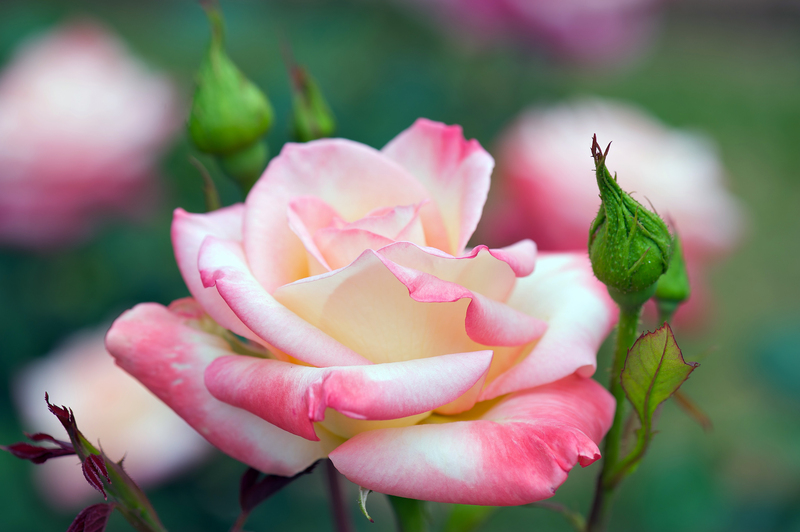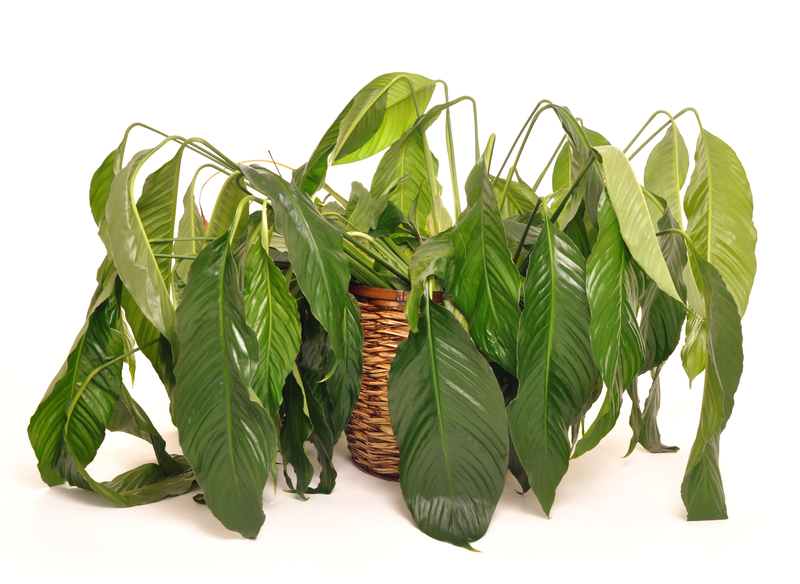Unlocking potential: Vertical gardening techniques
Posted on 04/09/2025
Unlocking Potential: Vertical Gardening Techniques for Modern Growers
As urban spaces shrink and the demand for fresh produce continues to rise, vertical gardening has emerged as an innovative and sustainable solution for gardening enthusiasts and professionals alike. By creatively utilizing vertical spaces, vertical gardens not only maximize yield but also bring aesthetic value to homes, offices, and public spaces. In this comprehensive article, we'll explore a range of vertical gardening techniques, their benefits, and practical tips to help you unlock the full potential of vertical gardening.

What Is Vertical Gardening?
Vertical gardening refers to growing plants upward (vertically) rather than the traditional horizontal method. This method uses structures such as trellises, wall-mounted planters, towers, hydroponic systems, and even recycled materials to cultivate greenery on walls, balconies, fences, or any upright surface.
- Saves space: Ideal for city living and apartments.
- Improves air quality: Greenery helps filter common pollutants.
- Enhances aesthetic appeal: Living walls can revitalize dull spaces.
- Increases yield: When managed properly, vertical systems can increase plant productivity per square foot.
Types of Vertical Gardens
Green Walls and Living Walls
Green walls, also known as living walls, are perhaps the most striking form of vertical gardening. These systems attach directly to indoor or outdoor walls and incorporate a wide variety of plants. Specialized frames and irrigation systems ensure even hydration and nutrition. Living walls are commonly used in commercial buildings, schools, and homes to create impactful, eco-friendly displays.
- Modular panels: Units that can be combined for large projects.
- Integrated irrigation systems for reduced maintenance.
- Support for a wide variety of plant species, from ferns to succulents.
Vertical Planters
These are standalone structures or containers mounted on walls, fences, or designed as free-standing towers. From pocket planters and hanging pots to stacked garden beds, the options are virtually endless. Vertical planters are perfect for herbs, leafy greens, and colorful annuals.
- Pocket planters made of fabric or plastic.
- Stackable vertical garden containers.
- DIY solutions using recycled bottles, gutters, or pallets.
Trellises and Climbing Supports
Many edible and ornamental plants, such as beans, peas, cucumbers, tomatoes, and passionflower, naturally climb by twining or tendrils. Incorporating trellises, lattices, arches, or obelisks allows these plants to reach upward, maximizing your use of available space.
Hydroponic Vertical Systems
Hydroponics eliminates the need for soil by growing plants in a nutrient-rich water solution. Vertical hydroponic towers provide ideal conditions for growing leafy greens, herbs, and strawberries. These systems are highly productive and suitable for urban settings, classrooms, and commercial farms.
Benefits of Vertical Gardening
- Space efficiency: Ideal for small apartments, balconies, and patios.
- Better pest and disease control: Elevating plants reduces exposure to soilborne pests and diseases.
- Healthier plants: Improved air circulation helps prevent fungal problems.
- Convenience: Vertical systems are often easier to access and maintain.
- Energy efficiency: Living walls provide insulation, potentially lowering heating and cooling costs.
Essential Techniques for Successful Vertical Gardening
1. Choosing the Right Plants
When starting your vertical garden journey, it's important to select crops that naturally thrive in limited soil and can tolerate varying light conditions. Some outstanding choices include:
- Leafy greens: Lettuce, spinach, arugula, and kale grow quickly and take up little space.
- Herbs: Basil, thyme, mint, oregano, and parsley are low-maintenance and productive.
- Strawberries: These fruit in hanging and tower systems.
- Succulents: Excellent for dry, sunny walls because of their drought resistance.
- Vining crops: Beans, peas, cucumbers, and tomatoes climb supports effortlessly.
- Ornamental plants: Petunias, nasturtium, and morning glories add color and beauty.
2. Building Your Structure
Vertical structures can be purchased pre-fabricated or constructed from a variety of upcycled materials. Consider these options:
- Pallet gardens: Attach landscape fabric to the back and bottom, stand upright, add soil, and plant in the slats.
- Gutter systems: Mount recycled rain gutters horizontally on a sturdy frame for chic, shallow planters.
- Pocket panels: Use durable fabric or repurposed shoe organizers for tiered pockets.
- DIY bottle gardens: Cut holes in plastic soda bottles, fill with soil, and hang on walls or fences.
- Trellises, obelisks, or arches: Use wire, bamboo, or wooden supports to guide vining crops upward.
3. Soil and Nutrient Management
The key to thriving vertical gardens is high-quality, lightweight, and well-draining growing mediums. Mix in organic compost, coir, perlite, or vermiculite to retain moisture while ensuring adequate aeration. Frequent watering is vital, as vertical gardens tend to dry out faster.
- Use slow-release, balanced fertilizers or organic compost tea for nutrition.
- Hydroponic vertical systems require precision with dissolved nutrients and pH monitoring.
- Mulch with coconut coir or straw to conserve moisture and prevent runoff.
4. Watering Strategies
Vertical gardening systems rely on consistent and efficient watering to prevent plant stress. Some effective irrigation methods include:
- Drip irrigation: Delivers water directly to the base of each plant, minimizing waste.
- Self-watering reservoirs: Some planters have built-in reservoirs at the base to reduce watering frequency.
- Hand watering: Use a watering can for smaller setups, ensuring thorough soaking without over-saturation.
Systems should be checked routinely for leaks or dry patches, especially during hot weather.
5. Providing Adequate Light
Assess your chosen location carefully--most edible crops require at least 6 hours of sunlight daily. For indoor vertical gardens or shaded areas, consider:
- Full spectrum LED grow lights for even growth.
- Rotating plants to ensure all receive adequate exposure.
- Positioning shade-loving plants towards the bottom or shaded sides.
6. Maintenance and Harvesting
Regularly inspect your vertical garden for pests, disease, and nutrient deficiencies. Pinch off dead or yellowing leaves, trim back overgrown vines, and replant or rotate crops for continual production.
- Deadheading and pruning: Promotes bushier growth and redirects energy to fruit or flower production.
- Monitoring for pests: Aphids, spider mites, and slugs can be managed with organic sprays or beneficial insects.
- Sanitizing: Periodically clean containers and supports to prevent buildup of pathogens.
Tip: Stagger plantings to enjoy a longer harvest period and visual interest throughout the season.
Innovative Vertical Gardening Ideas for Urban Spaces
- Herb Towers: Stackable trays or pots filled with culinary herbs for fresh flavors all year long.
- Living Privacy Screens: Position vertical planters to create beautiful, lush barriers for patios or balconies.
- Pocket Green Walls: Arrange dozens of small pockets for succulents or tropical foliage on a fence or wall.
- Indoor Edible Walls: Grow microgreens, lettuce, and herbs in specially designed kitchen wall racks.
- Artistic Pallet Gardens: Paint repurposed pallets and fill them with colorful annuals for a vibrant, eco-friendly statement piece.
Common Challenges and How to Overcome Them
1. Drying Out
Vertical gardens are more susceptible to water loss due to exposure and gravity. To counter this:
- Use water-retentive soil mixes.
- Install drip irrigation systems.
- Mulch and group moisture-loving plants together.
2. Structural Stability
Always ensure your wall or support can handle the weight, especially when saturated with water. For larger systems, use professional hardware and consult with an expert if necessary.
3. Uneven Sunlight
Taller vertical gardens might shade lower portions. Periodically rotate planters and choose shade-tolerant plants for the bottom tiers.
Vertical Gardening for Sustainability
Embracing vertical gardening is more than a space-saving solution--it's a step towards eco-conscious living. Some sustainable practices include:
- Using recycled materials for planters and supports.
- Collecting rainwater for irrigation.
- Growing pollinator-friendly flowers and herbs to support local bees and butterflies.
- Installing efficient LED lighting for minimal energy use indoors.
DIY Vertical Garden Project for Beginners
Start with a simple shoe organizer vertical herb garden:
- Hang a fabric shoe organizer on a sunny fence or wall.
- Fill each pocket with a lightweight potting mix.
- Plant easy-growing herbs like basil, mint, and chives in each.
- Water gently and harvest regularly for kitchen use.
Pro tip: Label each pocket and experiment with cut-and-come-again salad greens for a splash of color.

Future Potential of Vertical Gardening Techniques
As urbanization continues, the future of vertical gardening looks increasingly promising. Advanced hydroponic towers, smart irrigation, and automated climate controls make it possible to farm vertically on an unprecedented scale. From microgreens in kitchens to commercial living walls filtering city air, vertical farming unlocks possibilities for food production, sustainability, and wellbeing in even the most crowded cities.
Researchers and entrepreneurs alike are exploring aquaponic vertical gardens, solar-powered living walls, and public green installations to further integrate these techniques into urban planning and environmental management.
Ready to unlock the potential of your own space? Whether you have a sunny balcony, a bare fence, or even an indoor nook, vertical gardening techniques allow you to harness nature's power and create lush, productive greenery--one layer at a time.
Conclusion
Unlocking potential with vertical gardening is about more than beauty--it's about innovation, sustainability, and making the most of every available inch. By experimenting with different structures, plant types, and irrigation solutions, you can enjoy lush harvests and verdant surroundings anywhere.
Start small or dream big, but remember: with the right vertical gardening techniques, even the narrowest wall or tiniest patio table can become a thriving garden. Seize your space and grow upwards!
Discover more vertical gardening inspiration and expert tips by subscribing to our blog or following us on social media.

